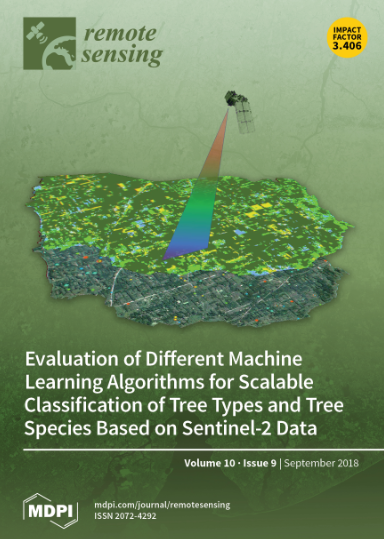Evaluating Satellite-Based Water Quality Sensing of Inland Waters on Basis of 100+ German Water Bodies Using 2 Different Processing Chains
IF 4.2
2区 地球科学
Q2 ENVIRONMENTAL SCIENCES
引用次数: 0
Abstract
Remote sensing for water quality evaluation has advanced, with more satellites providing longer data series. Validations of remote sensing-derived data for water quality characteristics, such as chlorophyll-a, Secchi depth, and turbidity, have often remained restricted to small numbers of water bodies and have included local calibration. Here, we present an evaluation of > 100 water bodies in Germany covering different sizes, maximum depths, and trophic states. Data from Sentinel-2 MSI and Sentinel-3 OLCI were analyzed by two processing chains. Our work focuses on analysis of the accuracy of remote sensing products by comparing them to a large in situ data set from governmental monitoring from 13 federal states in Germany and, hence, achieves a national scale assessment. We quantified the fit between the remote sensing data and in situ data among processing chains, satellite instruments, and our three target water quality variables. In general, overall regressions between in situ data and remote sensing data followed the 1:1 regression. Remote sensing may, thus, be regarded as a valuable tool for complementing in situ monitoring by useful information on higher spatial and temporal scales in order to support water management, e.g., for the European Water Framework Directive (WFD) and the Bathing Water Directive (BWD).使用两种不同的处理链,以德国 100 多个水体为基础,评估基于卫星的内陆水体水质传感技术
用于水质评价的遥感技术不断进步,更多的卫星提供了更长的数据序列。针对水质特征(如叶绿素 a、Secchi 深度和浊度)的遥感数据验证通常仅限于少数水体,并包括局部校准。在此,我们对德国超过 100 个水体进行了评估,这些水体涵盖不同大小、最大深度和营养状态。来自哨兵-2 MSI 和哨兵-3 OLCI 的数据通过两个处理链进行了分析。我们的工作重点是通过将遥感产品与德国 13 个联邦州政府监测的大型现场数据集进行比较,分析遥感产品的准确性,从而实现全国范围的评估。我们量化了遥感数据和原位数据在处理链、卫星仪器和三个目标水质变量之间的拟合程度。一般来说,原位数据与遥感数据之间的总体回归结果为 1:1。因此,遥感可被视为一种有价值的工具,可通过更高的空间和时间尺度上的有用信息来补充现场监测,从而支持水管理,例如欧洲水框架指令(WFD)和沐浴水指令(BWD)。
本文章由计算机程序翻译,如有差异,请以英文原文为准。
求助全文
约1分钟内获得全文
求助全文
来源期刊

Remote Sensing
REMOTE SENSING-
CiteScore
8.30
自引率
24.00%
发文量
5435
审稿时长
20.66 days
期刊介绍:
Remote Sensing (ISSN 2072-4292) publishes regular research papers, reviews, letters and communications covering all aspects of the remote sensing process, from instrument design and signal processing to the retrieval of geophysical parameters and their application in geosciences. Our aim is to encourage scientists to publish experimental, theoretical and computational results in as much detail as possible so that results can be easily reproduced. There is no restriction on the length of the papers. The full experimental details must be provided so that the results can be reproduced.
 求助内容:
求助内容: 应助结果提醒方式:
应助结果提醒方式:


